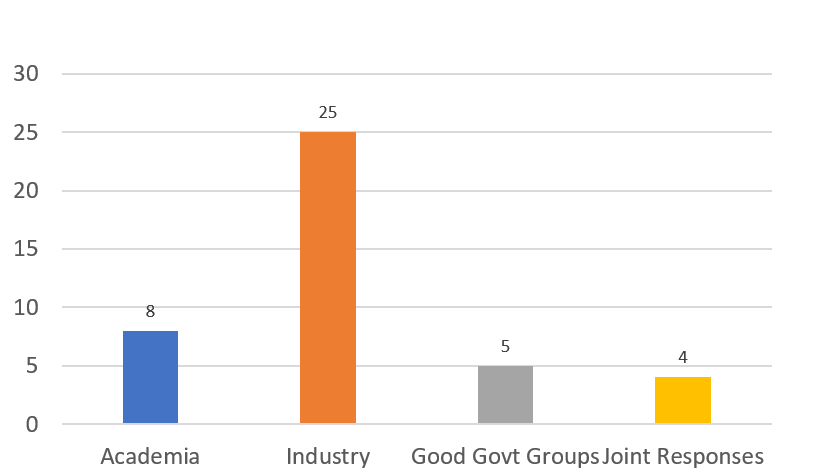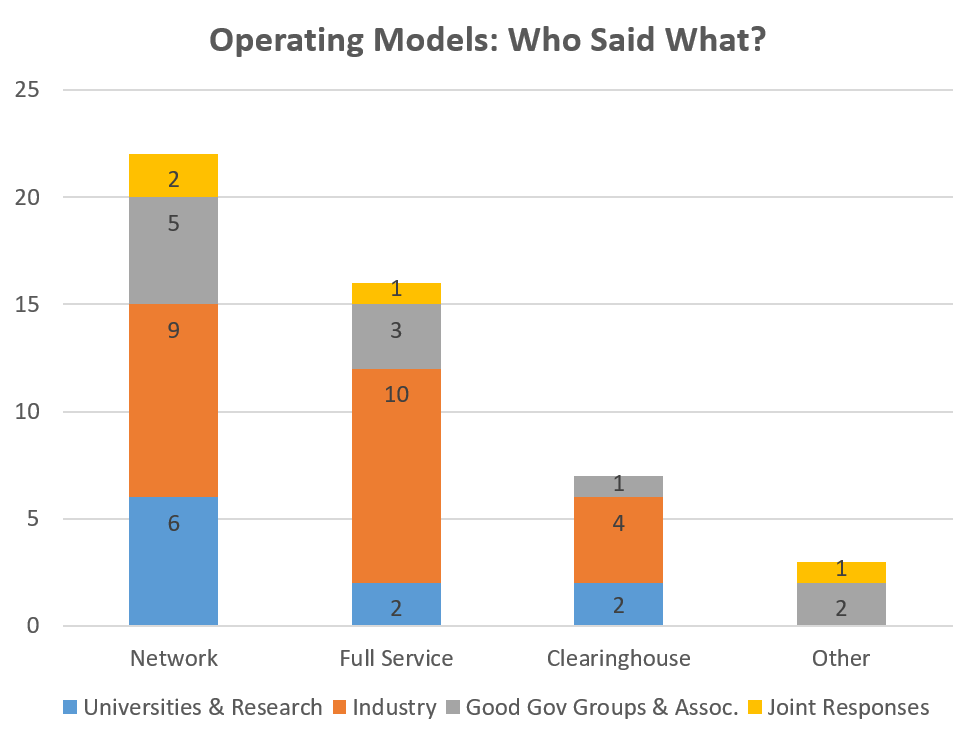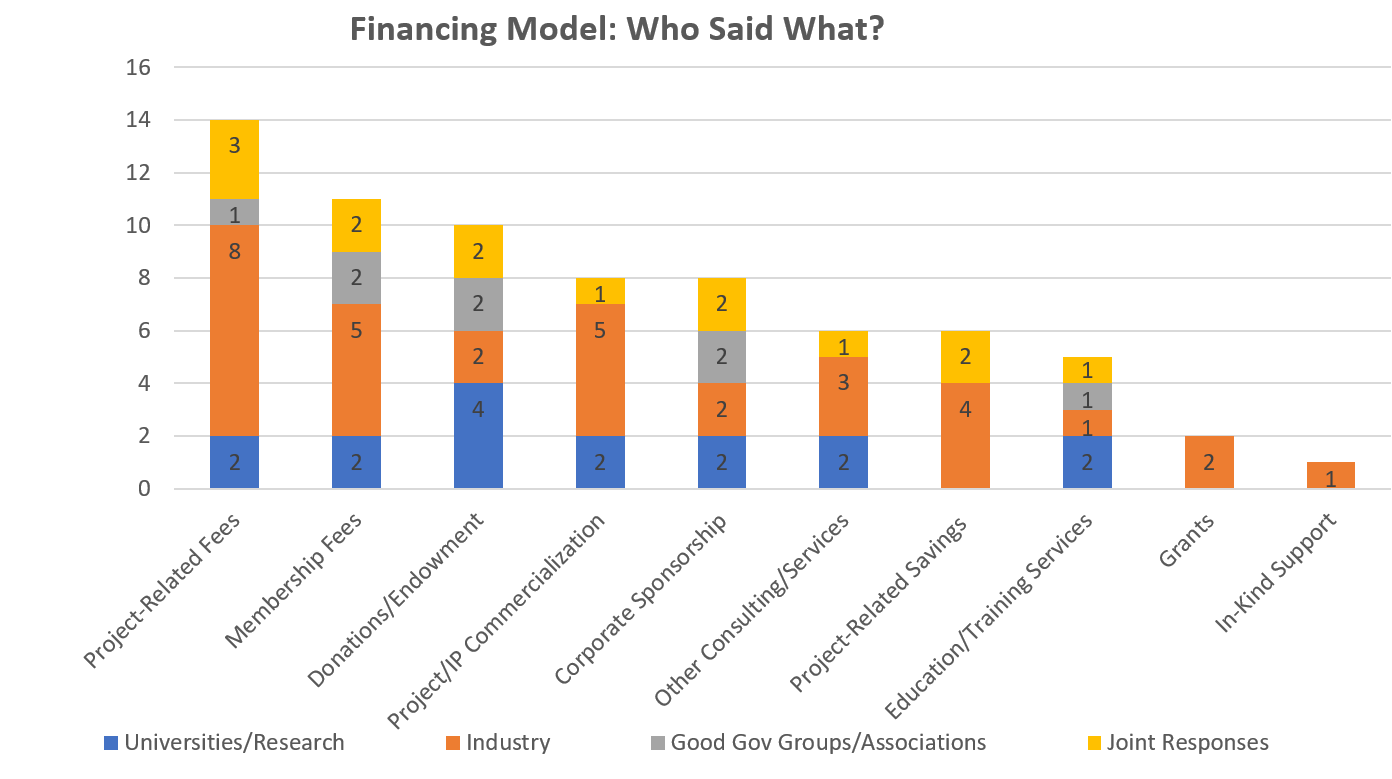GEAR Center Challenge Results!
Three grand prize winners have been chosen for the GEAR Center Challenge! Each winner received an award of $300,000. In addition, five honorable mentions were also selected from the pool of highly competitive applicants. Congratulations!
See the WinnersFrom RFI to Action:
Summary of Stakeholder Responses to the GEAR Center Request for Information
Who Responded?
Review process
Major Takeaways
Operating Models
Roles
FinancingWho responded to the RFI?
OMB received 42 responses to the RFI from across sectors. Reflecting the spirit of the GEAR Center, this number included several joint responses submitted collaboratively by multiple organizations and individuals.

How we reviewed the responses
Our interagency review team drew staff from:
- OMB’s Offices of Performance and Personnel Management and of Federal Procurement Policy
- National Science Foundation’s Office of the Director (CIO) & Division of Information Services
- Department of Defense’s MD5 National Security Technology Accelerator
Major Takeaways
Stakeholders agree with the need for the GEAR Center and want to be involved
- Bringing together expertise from across sectors can be a powerful catalyst for learning and solutions.
Stakeholders endorse workforce reskilling and data commercialization as priorities—and recommend priorities like:
- Digital government services
- Procurement reform
- Behavioral insights and evidence-based policy
- Artificial intelligence
- Cyber security
- Intergovernmental collaboration
- GEAR can learn from existing models that serve similar purposes, particularly models that support state and local governments.
- Stakeholders have ideas and desire to connect ongoing efforts to a GEAR capability.
Operating Models for the GEAR Center
Responses clustered around three general approaches to a GEAR Center operating model:
- Networked models in which one or more “hubs” would enable GEAR to access and leverage diverse expertise across topic areas and geographies to manage projects and conduct research.
- Full-service models in which a central organization would use in-house expertise to manage projects and conduct research.
- Clearinghouse models in which a central capability would match government needs to relevant project ideas and researchers.


Role of the GEAR Center
Responses recommended roles including:
- Conducting applied research projects directly
- Serving as a program management office (PMO)
- Scaling successful practices
- Facilitating data exchange
- Serving as a procurement lab
- Providing other policy expertise
Financing the GEAR Center
Responses suggested a range of ideas, from fee-for-service models to endowments.
While we appreciate these diverse responses, OMB and partner agencies will continue to work with stakeholders to identify the most effective market-based incentives and financing structures to create and sustain GEAR over time.

1 Industry includes both for-profit and not-for-profit organizations. Good government groups include non-partisan and bi-partisan organizations focused on public policy and management as well as professional associations. Joint responses include submissions representing collaboration across multiple organizations or multiple individuals in an unaffiliated capacity.
